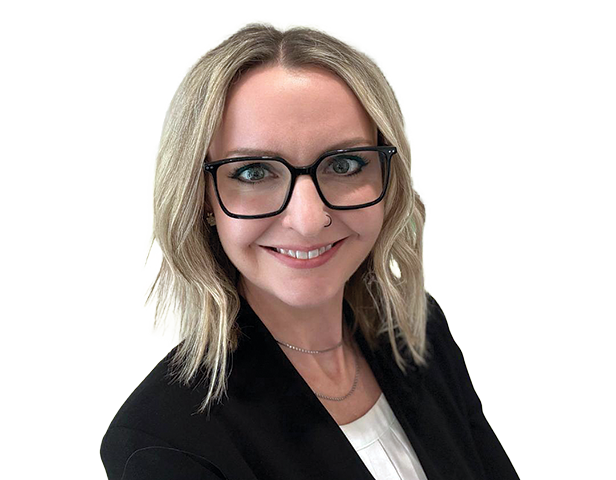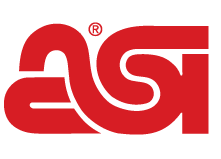The next five years in sustainability are likely to be a continuation of the first half of the decade, with a growing emphasis on transparency, traceability and circularity in the promo industry.
That’s not to say the movement is without headwinds. Greenwashing – when companies make misleading claims about the sustainability of their products and operations – is still all too prevalent in promo and beyond. And some sustainable promo experts worry geopolitical forces could have a dampening effect on progress, whether it’s related to President Trump withdrawing from the Paris Agreement (the international treaty that aims to reduce greenhouse gas emissions) for a second time, the EPA announcing significant rollbacks on environmental policies, or companies hunkering down amid fears of tariff-related trade wars and inflation. “So long as we’re focused on Maslow’s hierarchy of business needs, people aren’t going to be spending enough time doing the things they need to protect the future of the industry,” says Ian Rosenberger, CEO of Day Owl (asi/48696), a supplier that makes sustainable bags, while helping to improve working conditions for people around the globe collecting recyclables.

What’s the Defining Trend of the Next Five Years?
“The shift from sustainability as a talking point to a measurable business requirement. Companies will be expected to prove their environmental impact with auditable data, material traceability and circular solutions, driven by stronger regulations and increasing corporate and consumer demand for accountability.” Ben Grossman, Grossman Marketing Group (asi/215205)/SwagCycle
Still, for those pros who are committed to sustainability in the promo industry, resolve is unwavering. “We’re in all the way – ride or die,” Rosenberger adds.
Ben Grossman – a Counselor Power 50 member who also serves on ASI’s Promo for the Planet editorial advisory board – agrees about being completely invested. “Sustainability, like most other movements, is a marathon, not a sprint – it’s just one step at a time,” says the co-president of Grossman Marketing Group (asi/215205) and founder of SwagCycle, which facilitates the recycling or rehoming of obsolete or unwanted branded merch. Grossman started blogging about sustainability two decades ago and remembers when environmental concerns “got put on the back burner” during the global financial crisis of 2008. Eventually, however, sustainability bounced back. “It takes people sticking with it and making sure everyone is aware of the benefits of making environmentally responsible choices,” Grossman says.
As the latter half of the decade plays out, expect the following trends to have an impact on the industry.
Accelerating the Circular Economy
The circular economy is a response to the traditional “make-take-waste” linear economy. The idea, according to the Ellen MacArthur Foundation, is to eliminate waste and pollution; circulate products and material at their highest value; and regenerate nature. “I really believe that the circular economy is pivotal to the future of the promo industry,” Grossman says.
of distributors said clients asked for more environmentally friendly products in 2024 than 2023. Almost half (47%) of distributors said clients asked for more socially responsible products.
(ASI Research)
SwagCycle has been active in this space – focused on landfill divergence by upcycling, recycling or donating to charity around 3 million promo items over the last five years, often in collaboration with other industry firms. The SwagCycle model has grown in prominence and popularity, with an increasing number of distributors launching their own versions to help clients deal with unwanted branded merch.
Repair programs, takeback initiatives, upcycling and rebranding of excess inventory is gaining steam, agrees Doug Jackson, president of apparel supplier and bluesign System Partner Storm Creek (asi/89879). “Rather than discarding outdated or unsold products, companies will seek ways to refresh and repurpose them, reducing waste,” he adds. “We’ll also see more products designed with end-of-life in mind, ensuring that components, like patches, can be removed and repurposed.”
Regulation in the U.S. and abroad could also spur these trends. Several states are moving forward with extended producer responsibility (EPR) laws to manage and reduce single-use packaging waste. And last year, California became the first state to extend EPR legislation aimed at textiles, requiring companies that produce apparel and other textiles sold in the state to create or join a CalRecycle-approved Producer Responsibility Organization (PRO) that will design collection sites, mail-back programs or other recycling solutions to keep textile waste out of landfills.
“Everyone needs to be paying attention because typically what happens in California gets replicated across different states,” says Andy Keller, CEO of Certified B Corp ChicoBag (asi/44811) and a member of the Promo for the Planet editorial advisory board.
Buy Less, But Better
Retail trends like “underconsumption core” and “No Buy 2025” – where social media influencers advocate abstaining from nonessential purchases – could trickle into promo.
Already, among certain sustainability-minded brands, “no-swag” policies have taken hold. “There are companies that just don’t see the value in giving away a trinket – that’s how they view the stereotypical promo product,” says Brianna Mazze, vice president of compliance and sustainability at Counselor Top 40 supplier SRG (asi/84592; Canada, 84595). “Instead of giving away promo at a trade show, they’re actually donating to a charity in honor of their potential client.”

What’s the Defining Trend of the Next Five Years?
“Sustainability will shift from a marketing angle to a fundamental expectation. Businesses will be required to integrate recycled content, emission reductions and sustainable packaging as standard practices, just like product safety and compliance.” Brianna Mazze, SRG (asi/84592)
There are a variety of ways to deal with such sentiments, including focusing on the many industry products that also include a charitable giveback component. Another avenue is to take a page from brands like Patagonia and stress the idea of buying fewer, but higher-quality, longer-lasting products, Rosenberger says.
The concept of “choice-based gifting” is also a simple, yet powerful way to promote sustainability, Jackson says. “Encouraging customers to use company stores gives recipients the power to choose, reducing unnecessary production and waste,” he adds.
A Standardization of Metrics
Measuring and reducing greenhouse gas emissions – especially the elusive Scope 3 emissions that occur up and down a product’s value chain – has been a common challenge in the industry, with larger end-buyers in particular expecting carbon footprint measurements down to the product level. That said, such measurements haven’t necessarily been apples to apples, nor are these metrics readily understood among laypeople.
Victoria Sierra, compliance manager at Counselor Top 40 supplier Koozie Group (asi/40480), believes the tide is turning. “You know when small children are beginning to understand measurements – like how long a foot is and how much a pound weighs – and their explanations and stories actually start to make sense?” she says. “That’s where I feel we are right now when talking about sustainability metrics within the industry. Most people know they exist, but the way they quantify them isn’t always accurate.”
Going forward, she says, metrics will become more standardized, with suppliers and distributors leaning further into analytics platforms that have already gained a foothold in promo, like EcoVadis and Worldly’s Higg Index.
The State of Sustainability Reporting
KPMG surveyed 5,800 of its member companies across the world about its sustainability reporting, and noted marked progress, particularly in the publication of carbon reduction targets by four out of five respondents.
(KPMG)
Growth in Alternative Materials
Innovation and adoption of sustainable material alternatives will continue, whether it’s algae-based foam, polybags derived from seaweed, textiles made from pineapple fibers or something else entirely.
Mazze predicts that there will be more consumer products made from trash, like the PlastEco by PECO awards SRG offers that are created by melting down and reforming used thin-film plastic bags and recovered fishing nets – giving them an artistic, marbleized effect.
Trash, unfortunately, is an abundant medium, but transforming it into something new helps spark conversation and raise awareness. “There are even a few companies making recycled plastic out of electronics and refrigerators,” she says. “That novelty factor is great for promo.”
A Focus on Social Sustainability
The other area to watch is the social side of sustainability – emphasizing things like ethical labor practices and transparent supply chains. Just because a company is using purportedly sustainable materials in a product, Rosenberger says, doesn’t mean it’s a sustainable company – particularly if it’s not providing fair wages or safe working conditions.
“Where is a product coming from? How is it being made?” Mazze says. “All of those really important things are a part of sustainability beyond just the environmental impact – that social part is so important.”

Promo for the Planet is your destination for the latest news, biggest trends and best ideas to help build a more sustainable and socially-responsible industry.
